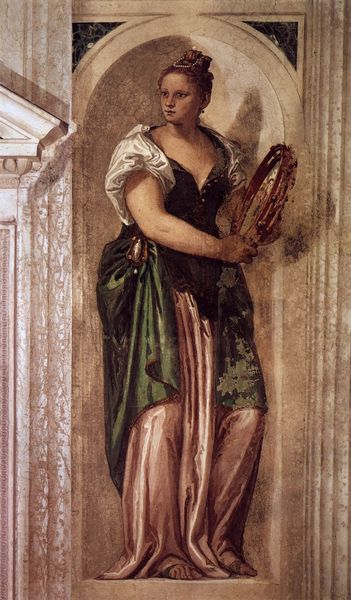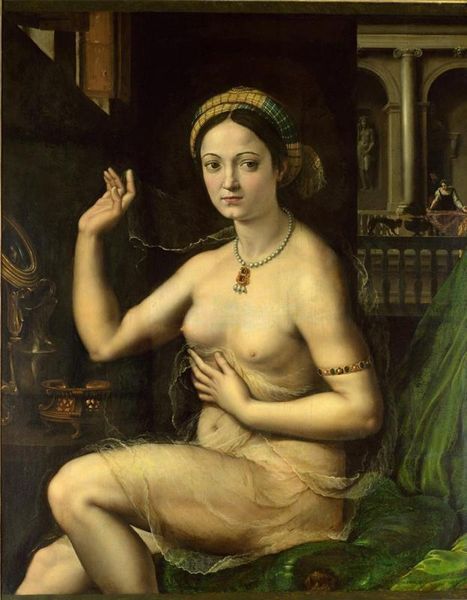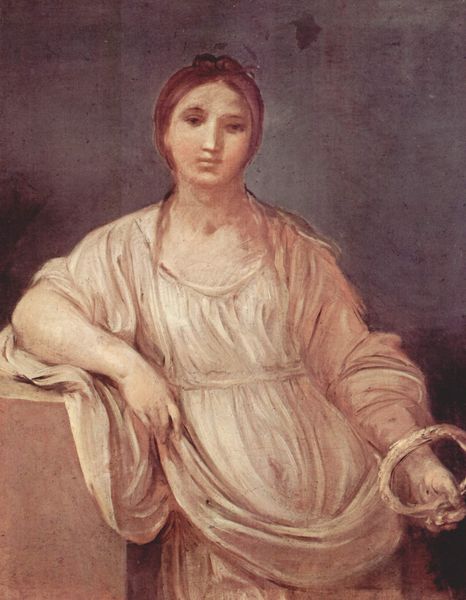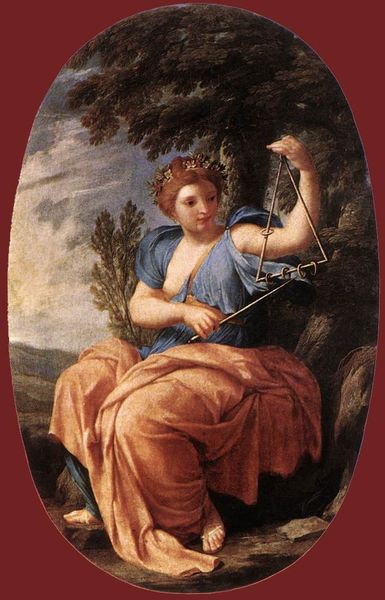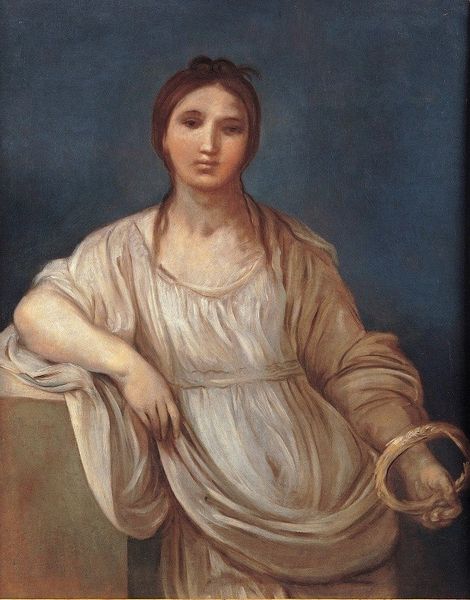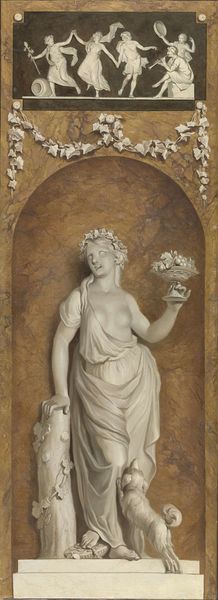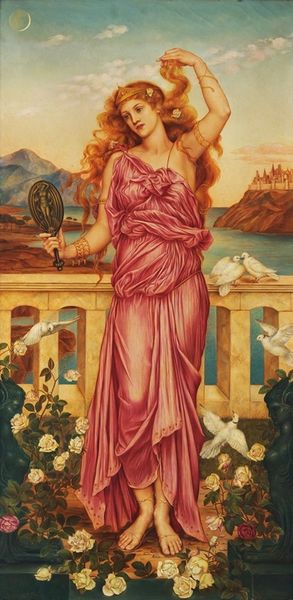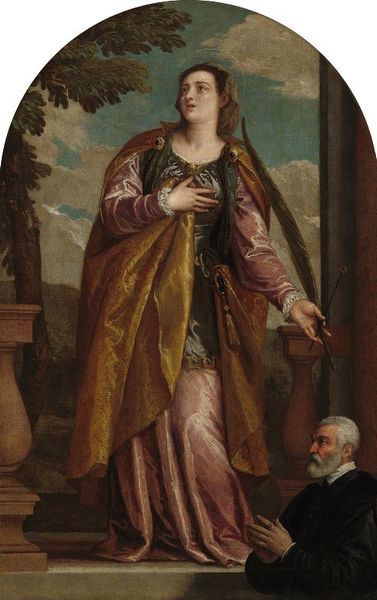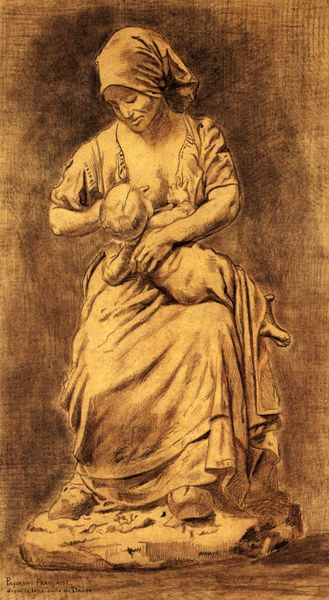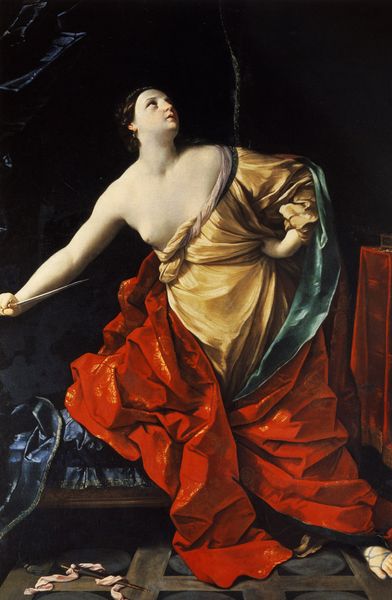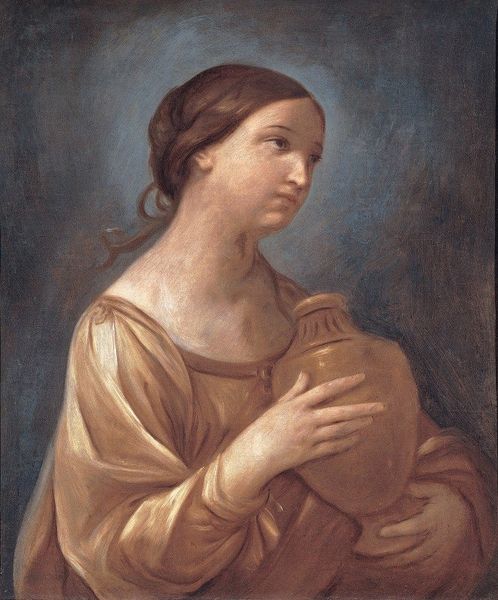
painting, oil-paint
#
portrait
#
venetian-painting
#
allegory
#
painting
#
oil-paint
#
sculpture
#
figuration
#
roman-mythology
#
mythology
#
italian-renaissance
Copyright: Public domain
Curator: Paolo Veronese’s "Muse with Lyre," painted around 1561. What a treat, isn't it? Editor: Absolutely. The way she emerges from the architecture gives it an uncanny aura. She has this lovely melancholy. A sort of introspective thoughtfulness. Curator: Her posture suggests contemplation, and there’s this visual dialogue with antiquity, doesn't it, with those meticulously rendered Roman sandals and that lyre that hints at so much more. Editor: Speaking of, the lyre in the image becomes this powerful emblem. It's more than an instrument; it suggests the harmonies between different realms of experience. Doesn’t music often bridge those gaps? What strikes you most? Curator: How Veronese captures this individual muse, so palpably human and real. And the drapery. Have you ever seen such subtle gradations of rose and terracotta? He creates volume simply by using these tiny almost imperceptible shifts in tone, and then this stark whiteness of her bare shoulder... It's astonishing how alive she feels after almost five centuries. Editor: Her stillness against that active color! You can trace a history of similar images back to ancient frescoes in Pompeii, or forward to...well, to a whole host of artworks attempting to tap into similar sentiments: loss, reflection. These images aren't just pictures. They’re triggers embedded with cultural memory. Curator: And in some ways the essence of that feeling stays so intact doesn't it? As we change through time. It’s strange to think of paintings almost as psychic devices; cultural triggers, if you like, passed down through generations! Editor: Exactly! Veronese tapped into something lasting with this Muse, maybe without even fully knowing it. An enduring capacity for reflection. Curator: She remains then, with her quiet melancholy, a sort of invitation— a welcome to participate in a history larger than our own, a song in the silence.
Comments
No comments
Be the first to comment and join the conversation on the ultimate creative platform.
